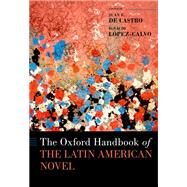- ISBN: 9780197541852 | 0197541852
- Cover: Hardcover
- Copyright: 3/8/2023
The Latin American novel burst onto the international literary scene with the Boom era--led by Julio Cortázar, Gabriel García Márquez, Carlos Fuentes, and Mario Vargas Llosa--and has influenced writers throughout the world ever since. García Márquez and Vargas Llosa each received the Nobel Prize in literature, and many of the best-known contemporary novelists are inspired by the region's fiction. Indeed, magical realism, the style associated with García Márquez, has left a profound imprint on African American, African, Asian, Anglophone Caribbean, and Latinx writers. Furthermore, post-Boom literature continues to garner interest, from the novels of Roberto Bolaño to the works of César Aira and Chico Buarque, to those of younger novelists such as Juan Gabriel Vásquez, Alejandro Zambra, and Valeria Luiselli. Yet, for many readers, the Latin American novel is often read in a piecemeal manner delinked from the traditions, authors, and social contexts that help explain its evolution.
The Oxford Handbook of the Latin American Novel draws literary, historical, and social connections so that readers will come away understanding this literature as a rich and compelling canon. In forty-five chapters by leading and innovative scholars, the Handbook provides a comprehensive introduction, helping readers to see the region's intrinsic heterogeneity--for only with a broader view can one fully appreciate García Márquez or Bolaño. This volume charts the literary tradition of the Latin American novel from its beginnings during colonial times, its development during the nineteenth and the first half of the twentieth century, and its flourishing from the 1960s onward. Furthermore, the Handbook explores the regions, representations of identity, narrative trends, and authors that make this literature so diverse and fascinating, reflecting on the Latin American novel's position in world literature.
The Oxford Handbook of the Latin American Novel draws literary, historical, and social connections so that readers will come away understanding this literature as a rich and compelling canon. In forty-five chapters by leading and innovative scholars, the Handbook provides a comprehensive introduction, helping readers to see the region's intrinsic heterogeneity--for only with a broader view can one fully appreciate García Márquez or Bolaño. This volume charts the literary tradition of the Latin American novel from its beginnings during colonial times, its development during the nineteenth and the first half of the twentieth century, and its flourishing from the 1960s onward. Furthermore, the Handbook explores the regions, representations of identity, narrative trends, and authors that make this literature so diverse and fascinating, reflecting on the Latin American novel's position in world literature.







